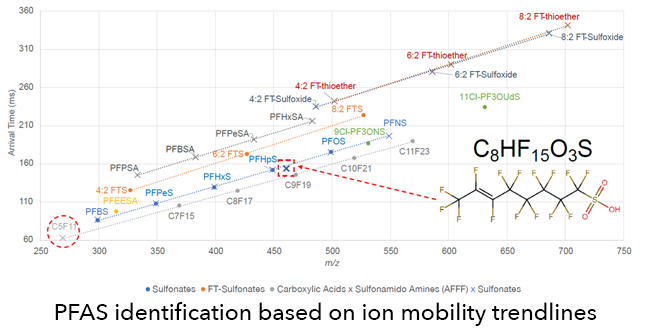

The Objective
To demonstrate the ability of high-resolution ion mobility (HRIM) to enhance existing chromatographic methods and provide richer insights into samples.
The Challenge
Per- and polyfluoroalkyl substances (PFAS), a group of synthetic organic compounds renowned for their superior chemical stability and resistance, have emerged as an insidious and pervasive global contaminant. With their broad industrial and commercial applications spanning over half a century, these “forever chemicals” have found their way into various environmental matrices, creating significant public health concerns. The inscrutable nature of PFAS, coupled with a lack of comprehensive analytical techniques, has given rise to the concept of PFAS “dark matter.”1 Referring to the subset of PFAS compounds that currently elude detection by conventional, targeted analytical methods, these compounds have effectively remained in “darkness,” and hence, their effects and prevalence are not fully understood.
In this landscape, forensic fingerprint analysis emerges as a promising tool, offering a new way to get more out of existing analytical processes. This technique, traditionally used in pollutant source identification, could provide a nuanced understanding of PFAS sources, pathways, and fates in the environment.2 Herein we demonstrate a more comprehensive analytical technique using HRIM coupled to high-resolution mass spectrometry (HRMS) to illuminate our understanding of PFAS distribution, impact, and mitigation. Integrated with existing liquid chromatography methods, HRIM is capable of shedding light on the unseen realm of PFAS and is ultimately positioned to guide us towards a more holistic understanding of these persistent compounds.





